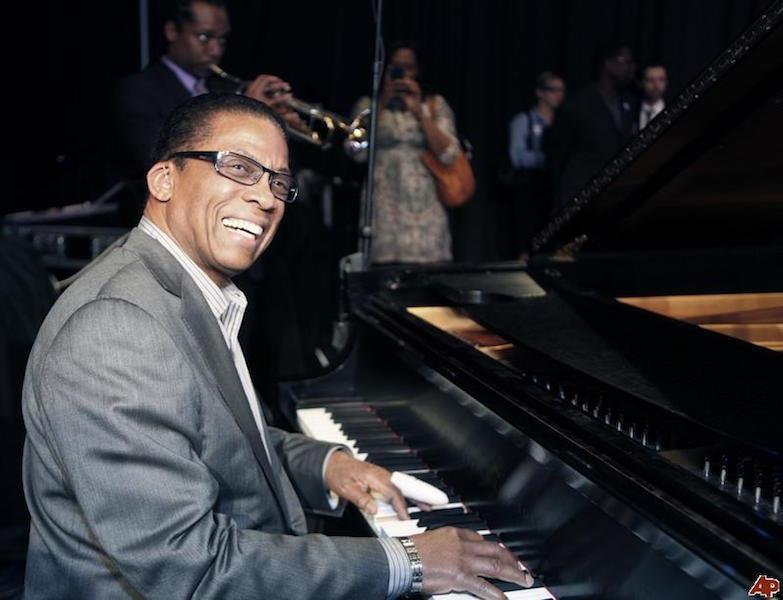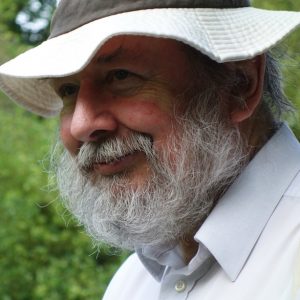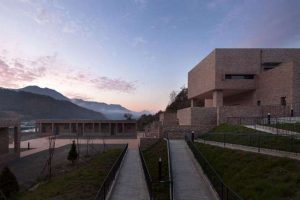
“Chameleon,” “Watermelon Man,” “I Thought it was You,” “Rockit,” “Cantaloupe Island,” . . . if any of these titles sound familiar, the name Herbie Hancock will surely set a jazzy tune automatically playing in your mind’s gramophone (or iPod, it depends which circular disk our generations had/have the privilege of using).
Musical maestro Herbert Jeffrey “Herbie” Hancock was born in Chicago, Illinois, on 12 April 1940. Taking up the piano at age 7, Hancock’s talent could not be denied, especially when at the tender age of 11 he played Mozart with the Chicago Symphony Orchestra. During his high school years he was fascinated by jazz, but chose a rather heavy major when he entered Grinnell College in 1956: electrical engineering. However, unable to keep his love of music at bay, he ended up double majoring in electrical engineering and music.
When he left Grinnell in 1960, Hancock played with esteemed trumpeter Donald Byrd and saxophonist Coleman Hawkins. Later, after forming his own group, he moved to New York. At this point he had gone beyond his classical piano training and developed a strong love of jazz—a passion which, later on, would turn him into a musical pioneer in using synthesizers and helping create music genres such as “funk.” Hancock’s experimentation with music knew no bounds. While his customary genre was traditional jazz, he didn’t shy away from trying out different compositions with R&B, hip-hop, electronic jazz, or fusion mixes. Over the decades, he has released over 40 studio albums, 12 live albums, and around 38 single tracks. And according to Biography.com, by 2013 he had won no less than 14 Grammy Awards.
The 74-year-old musician is also a follower of Nichiren Buddhism, which adheres to the teachings of the Japanese monk Nichiren (1222–82). Followers of this branch of Buddhism, which is based on the Lotus Sutra, believe that as all beings possess an innate Buddha nature, it is possible to reach enlightenment in the present lifetime. Their main method is meditation based on recitation of the mantra Nam myoho renge kyo, (literally meaning “I devote myself to the Lotus Sutra”).
Hancock’s first encounter with the religion was in 1972 when he heard the musical tones of Nam myoho renge kyo rendered into a bass guitar solo by a fellow band-mate. On his website, he says: “Practicing Buddhism has brought several revelations to me. One that has been extremely important to my own personal development and consequently my musical development—is the realization that I am not a musician. That’s not what I am. It’s what I do. What I am is a human being. Being a human being includes me being a musician. It includes my being a father, a husband, a neighbor, a citizen and an African-American. All of these relationships have to do with my existence on the planet.”
As a long-time practitioner of Nichiren Buddhism, Hancock is also a long-term member of Soka Gakkai International (SGI). SGI was founded in 1975 and is now an extensive network of 93 organizations and 12 million members in 192 countries worldwide. Following the teachings of Nichiren Buddhism, SGI seeks to “contribute to peace, culture and education” according to the religious branch’s ideals.
In an interview for the SGI Quarterly, Hancock spoke in detail about his musical experience, his thoughts on suffering (Skt. duhkha, often translated as “dissatisfaction,” which the Buddha taught was one of the fundamental characteristics of our existence), the effects of technology on society, and working with younger people. One of my favorite quotes from Hancock in this article is: “The most valuable qualities of life are priceless; they cannot be bought or sold. And they have more to do with recognizing that you can overcome situations in your life, recognizing that obstacles are the means for growth in your life, with developing compassion and appreciation for the people in your life, for the environment that we live in. Developing courage.”
In an interview with Valerie Reiss in 2013, Hancock revealed that he chants Nam myoho renge kyo every day, mainly in the mornings and evenings. Balancing his jazz career and spiritual practice, Hancock draws comparisons between the two, stating that “because in jazz we share, we listen to each other, we respect each other, we are creating in the moment. At our best we’re non-judgmental.”
Hancock is also heavily involved in various projects. He supports the Elizabeth Glaser Pediatric AIDS Foundation and the Alzheimer’s Foundation of America, and is the institute chairman of the non-profit organization Thelonious Monk Institute of Jazz, which provides promising musicians with college-level training. In 2011, he was also titled an honorary UNESCO Goodwill Ambassador by the director-general of UNESCO, Irina Bokova.
Follow Herbie Hancock’s latest updates on Twitter!
For further information, see:















